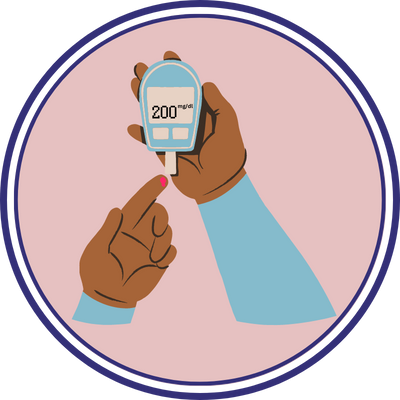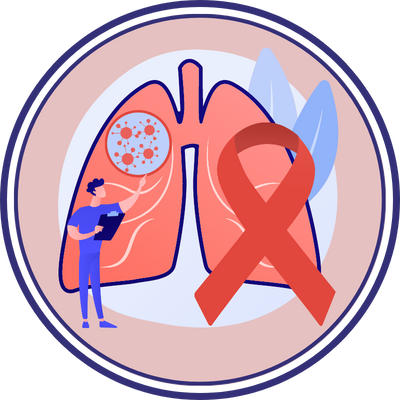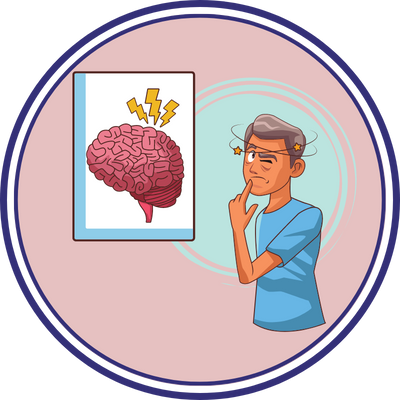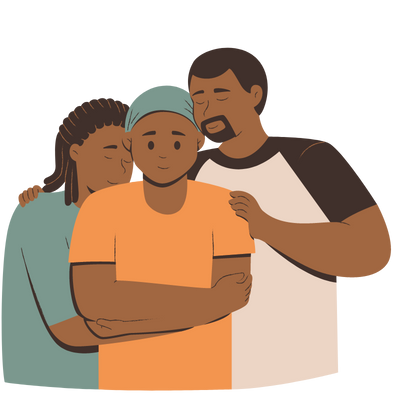History Of World No Tobacco Day
The Member States of the World Health Organization created World No Tobacco Day in 1987 to draw global attention to the tobacco epidemic and the preventable death and disease it causes. In 1988, Resolution WHA42.19 was passed, calling for the celebration of World No Tobacco Day, every year on 31 May.
World No Tobacco day: Epidemiology, Impact, Diseases, Prevention.
ABOUT TOBACCO
The Member States of the World Health Organization created World No Tobacco Day in 1987 to draw global attention to the tobacco epidemic and the preventable death and disease it causes. In 1988, Resolution WHA42.19 was passed, calling for the celebration of World No Tobacco Day, every year on 31 May.
epidemiology of tobacco use

Tobacco kills more than 8 million people over the world each year.
More than 7 million of those deaths are the result of direct tobacco use
Around 1.2 million deaths are the result of non-smokers being exposed to second-hand smoke.

There are almost 267 million tobacco users in India.
Types of TOBACCO exposure

-
Smoked tobacco product
Any product made or derived from tobacco through a combustion process. Examples include manufactured cigarettes, roll-your-own tobacco, cigars, shisha, kreteks and bidis.
-
Smokeless tobacco
Any product that consists of cut, ground, powdered, or leaf tobacco intended to be placed in the oral or nasal cavity. Examples include snuff, chewing tobacco, gutka, mishri and snus.
Second-hand smoke
The combination of “mainstream” smoke exhaled by the smoker and “sidestream” smoke emitted into the environment from lit cigarettes and other smoked tobacco products. “Passive smoking” or “involuntary smoking” are also often used to describe exposure to SHS.
impact of tobacco on environment

- Every year, approximately 35 lakh hectares of land are destroyed to cultivate tobacco.
- Annually, tobacco cultivation causes 2,00,000 hectares of deforestation and soil degradation around the world
- Every year, approximately 4.5 lakh crore cigarette butts are not properly disposed of globally, generating 80 crore kg of toxic waste and releasing thousands of chemicals into the air, water, and soil.
- Per year, approximately 4.5 lakh crore cigarette butts are not properly disposed of globally, generating 80 crore kg of toxic waste and releasing thousands of chemicals into the air, water, and soil.
Diseases Caused By TOBACCO USE

Metabolic diseases

HEART ATTACK, STROKE, AND OTHER CARDIOVASCULAR DISEASES
The use of smokeless tobacco products increases the risk of death due to heart attack or stroke.Smoking tobacco affects the arteries in the heart, resulting in plaque build-up and the formation of blood clots, which ultimately restrict blood flow and result in heart attacks and strokes.Those who smoke just one cigarette per day are already half as likely as those who smoke 20 per day to develop heart disease and stroke.

TYPE 2 DIABETES
Smokers have an increased chance of acquiring diabetes, and that risk grows exponentially as one smokes more cigarettes.
Gastrointestinal diseases

ORAL CANCER AND OTHER ORAL DISEASES
A significant portion of oral illness is brought on by tobacco use (both smoked and smokeless). It is recognised that both types can lead tocancer. significant facial deformity, oral cancer survivors typically lose their ability to speak, swallow, and chew. Smoking tobacco and using smokeless tobacco products alter the discolouration of the teeth, and poor breath.

GUT DISEASES
Smokers are more likely to develop gastrointestinal diseases, such as, inflammatory bowel diseases, Crohn's disease and stomach ulcers, and cancers of the gastrointestinal tract. Constant diarrhoea, fever, rectal bleeding, and abdominal cramps are symptoms of inflammatory bowel disease.
Immunological diseases

THROAT CANCER
The risk of head and neck cancers, including cancers of the lips, throat (pharynx and larynx), and oesophagus, is increased by smoking and using smokeless tobacco products. Tracheostomy is done on patients having larynx. It is uncomfortable and occasionally impossible to eat due to the side effects of radiation and chemotherapy for throat cancer, which include taste loss, decreased saliva production, and increased throat mucus.

WEAKENED IMMUNE SYSTEM
Smokers are more susceptible to lung infections because tobacco smoke's components weaken the immune system. Additionally, smokers with a hereditary susceptibility to autoimmune disorders are more likely to develop several illnesses, including cancer, rheumatoid arthritis, Crohn's disease, bacterial meningitis, and postoperative infections. People with HIV are more likely to get AIDS due to the immunosuppressive effects of cigarettes.
Respiratory diseases

LUNG CANCER
Compared to non-smokers, smokers have a lifetime risk of lung cancer that is up to 22 times as high. Lung cancer can also develop in non-smokers who are around second-hand smoke at home or work.

ASTHMA
Adults with asthma who smoke tend to have more exacerbations, which can limit their capacity to function, cause disabilities, and medical attention.

CHRONIC OBSTRUCTIVE PULMONARY DISEASE
Smokers are 3–4 times more prone to acquire COPD than non-smokers. Smoking tobacco damages the lungs' air sacs, causing them to swell and rupture, which decreases the lung's ability to take in oxygen and expel carbon dioxide.

TUBERCULOSIS
Smoking tobacco is known to double the risk of bringing tuberculosis from a latent to an active state. Lung function is worsened by the synergistic effects of smoking and tuberculosis, which destroys the lungs. increases the likelihood of respiratory failure-related death and severe disability.

OTHER RESPIRATORY ILLNESSES AND REDUCED LUNG FUNCTION
Pneumonia and all other significant respiratory symptoms, such as coughing, wheezing, and phlegm, are known to be brought on by tobacco use.
Disease affecting paediatric population

FOETAL DEATH
Pregnancy-related tobacco use and smoke exposure raise the danger of foetal mortality. Miscarriages are more likely to occur in pregnant women who smoke or are around second-hand smoke. Due to foetal oxygen deprivation and placental defects brought on by nicotine in smokeless tobacco, tobacco smoke, and carbon monoxide in tobacco smoke, stillbirths are also more likely.

REDUCED FOETAL GROWTH, LOW BIRTH WEIGHT AND PRETERM DELIVERY
Tobacco exposure or usage during pregnancy can harm the unborn child's development. Children are more likely to be preterm or have low birth weight whose mothers smoke, use smokeless tobacco, or are exposed to second-hand smoke while they pregnant.

SUDDEN INFANT DEATH SYNDROME
The sudden, unexplained death of a child under one is known as sudden infant death syndrome (SIDS). Smoking during pregnancy is known to raise the risk of SIDS, and the risk is even higher for children whose parents continue to smoke after the kid is born.

BIRTH DEFECTS
Smoking can alter sperm's DNA and produce deformities, which could lead to birth abnormalities. According to studies, males who smoke are more likely to father a child who has cancer. Early-pregnancy maternal smoking increases a baby's risk of having a cleft lip and/or palate. Additionally, it has been observed that men with smoking mothers had lower sperm densities than men with non-smoking mothers.
Reproductive diseases

REDUCED FERTILITY IN MEN AND WOMEN
Smokers are more likely to have trouble getting pregnant, take longer to conceive, and have a higher chance of miscarriage than non-smokers. Men who smoke have lower sperm counts, worse sperm motility, and lower sperm morphology.

ERECTILE DYSFUNCTION
Smokers are more prone to get erectile dysfunction, which is highly likely to last or become permanent unless the man quits smoking at a young age.

MENSTRUATION AND MENOPAUSE
Smoking increases the likelihood of uncomfortable menstruation and more severe menopausal symptoms in women Menopause happens 1-4 years sooner in women who smoke.
Sensory organ disorders

VISION LOSS
Smokers are more likely to get cataracts, a clouding of the eye's lens that impairs vision. smoking may also contribute to glaucoma, a disorder that worsens eyesight and increases eye pressure. Tobacco smoke causes eye irritation, worsens dry eye syndrome, especially those who wear contact lenses.

HEARING LOSS
Children under two who are exposed to second-hand smoke at home due to parental smoking have been documented to develop middle ear disease (middle-ear illness). Due to the effects of long-term smoking on the cochlear blood supply, adult smokers are more prone to experience hearing loss.

SKIN DAMAGE
Tobacco smoking increases the risk of developing Dry, leathery, and wrinkled skin is more common in smokers, especially around the lips and eyes.
Neurological disease

DEMENTIA
Smoking increases the risk of dementia. Most cases of dementia progress over time, impairing daily tasks by affecting memory, behaviour, and other cognitive abilities. The most prevalent type of dementia is Alzheimer's, and smoking is attributed to be a contributing factor in 14% of Alzheimer's worldwide.
OTHER CANCERS
At least 70 of the several compounds found in tobacco smoke have been linked to cancer. Acute myeloid leukaemia, cancer of the nasal and paranasal sinuses, colorectal cancer, kidney cancer, liver cancer, pancreatic cancer, stomach cancer, ovarian cancer, and cancer of the lower urinary tract (including the bladder, ureter and renal pelvis) are common in smokers. Smokeless tobacco has 28 carcinogens that can lead to pancreatic, oesophagus, and oral cavity cancers.
prevention
What You Can Do
Everyone can help prevent children, teenagers, and young adults from trying and using tobacco products, from those who directly influence youth to entire communities.

Parents and others can:
- Set a good example by abstaining from tobacco.
- Discuss the dangers of tobacco products with your children

Healthcare providers can:
- Discuss the dangers of tobacco use with their patients.
- Ask patients if they use tobacco products and encourage them to stop.

States and communities can:
- Fund state tobacco control programmes after discussing it with ICMR and state medical boards.
- licencing tobacco sellers, and limiting where tobacco products can be sold.



